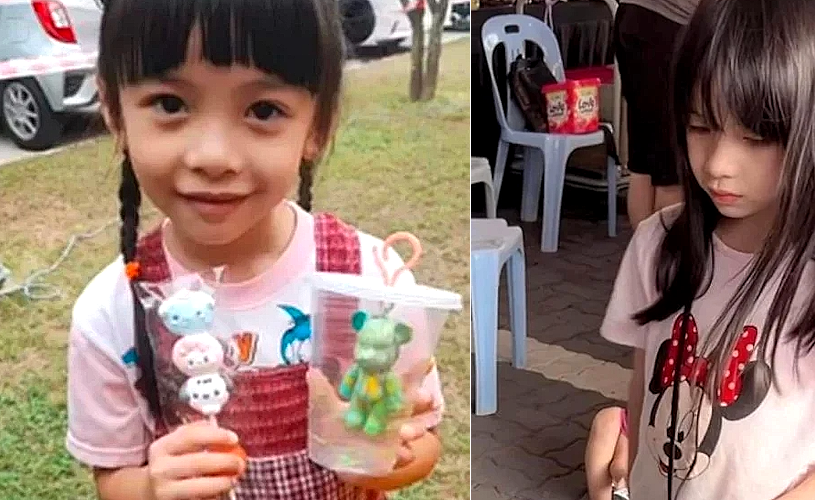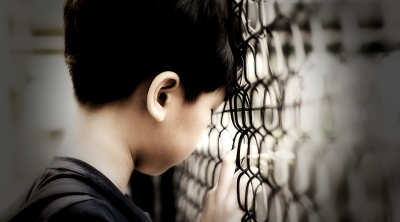
We, as a nation, breathed a sigh of relief when it was announced that the six-year-old girl, who had gone missing in Johor Bahru, was found.
She and her family must have been traumatised, and they will need much time and therapy to heal.
Children can go missing for many reasons. Teenagers may choose to leave the home due to conflict with their parents or guardians, running away from an abusive environment, groomed by a sex predator, issues at school, or psycho-social (mental health) issues.
At times, a child may be abducted by a parent in a custody battle.
Children with disabilities, particularly those with autism or severe hyperactivity, may wander off unintentionally.
And finally, there is the young child, preschool who is abducted by strangers, kidnapped for a financial motive or who wanders off.
The Royal Malaysian Police (PDRM) and Home Minister state that there has been no increase in the number of missing persons in recent years.
However, PDRM statistics show that up to 900 children are missing yearly, or two to three per day. Fortunately, they report that the majority (85 to 90 per cent) are found.
I would like to suggest some safety measures to reduce the risk of a young, preschool child going missing. This does not relate to teenage runaways or those with a disability, where different measures will be required.
Close supervision always and devices
In one study that I was involved in at the Clinical Research Centre Perak, we looked at young children’s safety at shopping complexes.
Of 275 children under five years of age with caregivers, 38% were involved in at least one unsafe monitoring episode. The majority of these children involved out-of-sight or out-of-reach episodes.
Of concern was that many caregivers (55%) allowed their young children to walk on their own without any safety measures (holding hands, carrying, use of stroller, etc). Many caregivers were distracted by (engrossed in) shopping activities or using their handphones.
It is vital that adults, parents and guardians offer close supervision to children in their care at all times.
This is not easy to do in crowded places. Very young children can be carried or placed in a shopping trolly seat. Parents should always hold hands with preschool children or use a safety device that links them to the child. This could be an adjustable wristband harness or a toddler chest harness strap.
Some people frown on these safety devices but parents who have used them will attest to their value.
Some parents invest in GPS kid trackers attached to their children’s clothing or as a wristband.
Some GPS devices also have a built-in SOS button which young kids can press when they are in a dangerous situation.
I would strongly recommend that parents avoid using their phones when going out with their children as this distracts them from supervising their child.
Educate children by age 2-3 years on stranger danger and situations
All children should routinely be trained by the age of two to three years about the dangers of strangers and to NEVER relate to them or go with them.
Children aged four to five years should also be taught their names, addresses, parents’ names and a phone number. It is useful to have this information on the child, attached to a neck or wristband, that they can show others.
Parents should educate or role-play with their children as to what to do if they are lost or cannot find their parents, in a busy environment like a shopping mall. Teach them to approach the staff at the checkout or payment counter to ask for help.
Parental preparedness
Keep updated the photos of your children for identification purposes, and be aware of emergency hotlines.
While we hope and pray this never happens to us, doing some reflection and reading about it make us more prepared to prevent it and act immediately, if it ever happens.
Community support
Members of the public should act if they see a young child wandering unattended. We should work to find the parents urgently.
The Malaysian community has also been helpful to help disseminate information on missing children. PDRM has the NUR Alert system and a ‘Missing Children Portal’ which the public can access.
Bringing up a child in these difficult times is not easy. Society can support parents with our vigilance, while we look to the authorities to improve the safety of our environments.
A preschool programme to train all children on safety would be good.

(Dato’ Dr. Amar-Singh HSS is Consultant Paediatrician and Child-Disability Activist.)
ADVERTISEMENT
ADVERTISEMENT







































